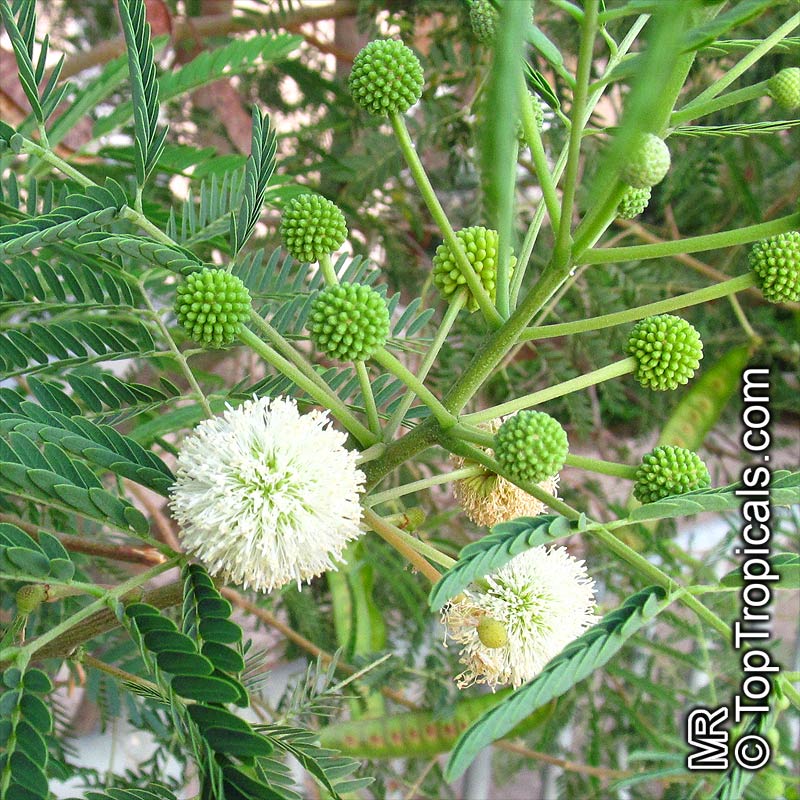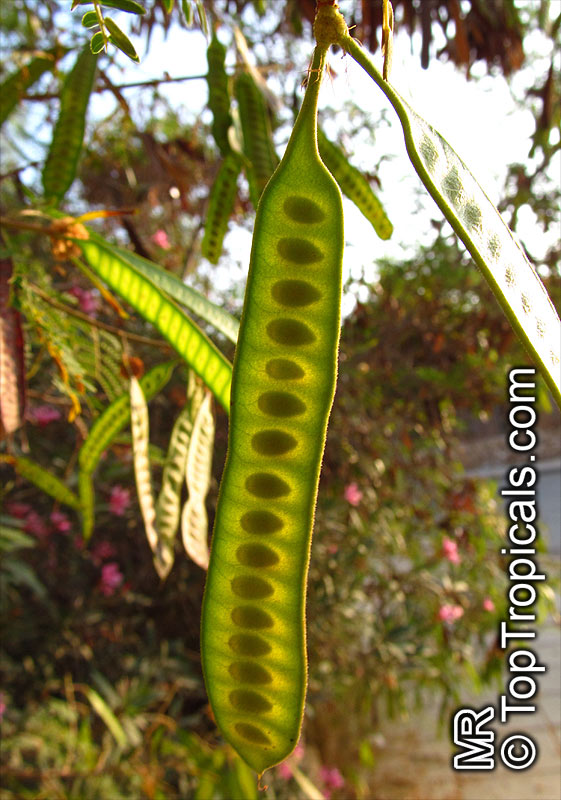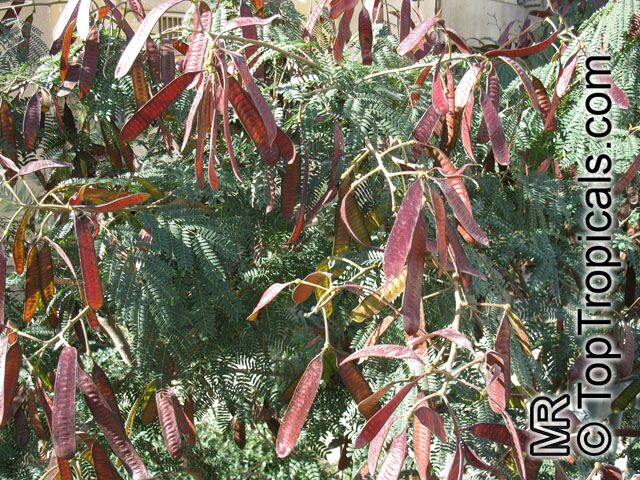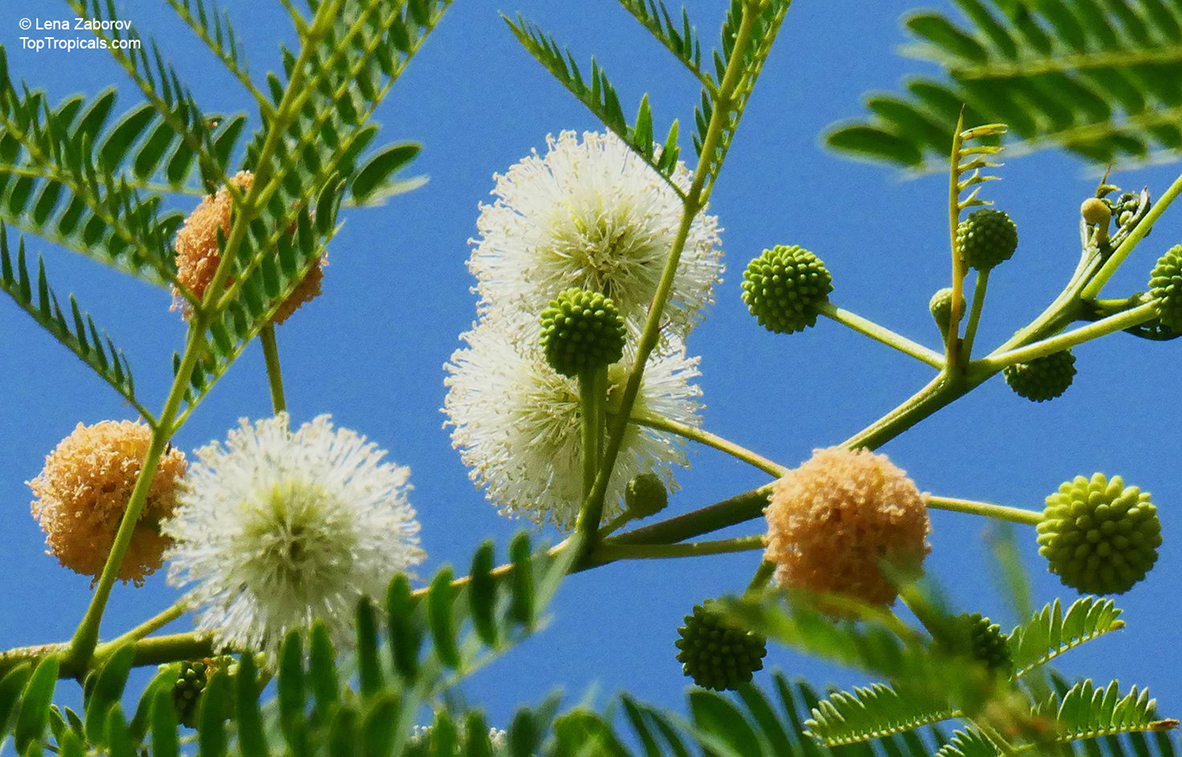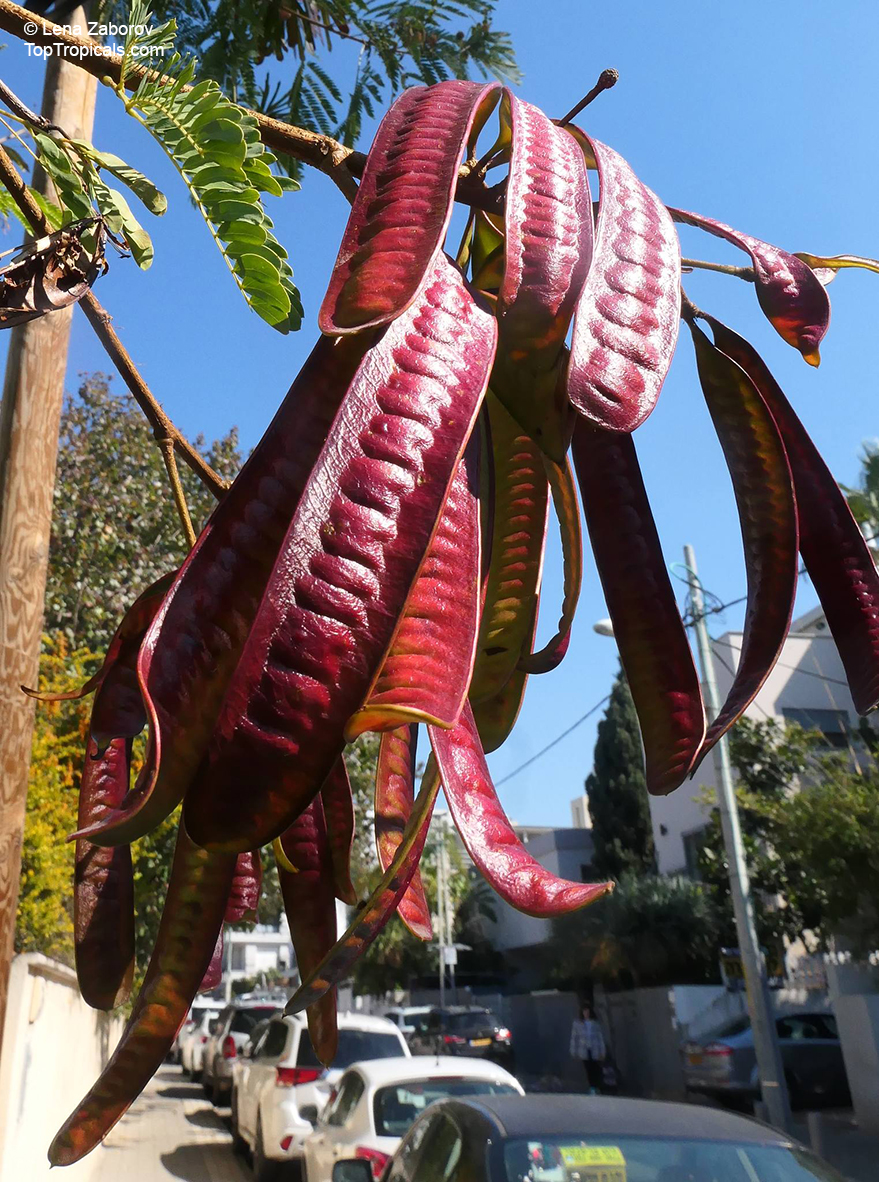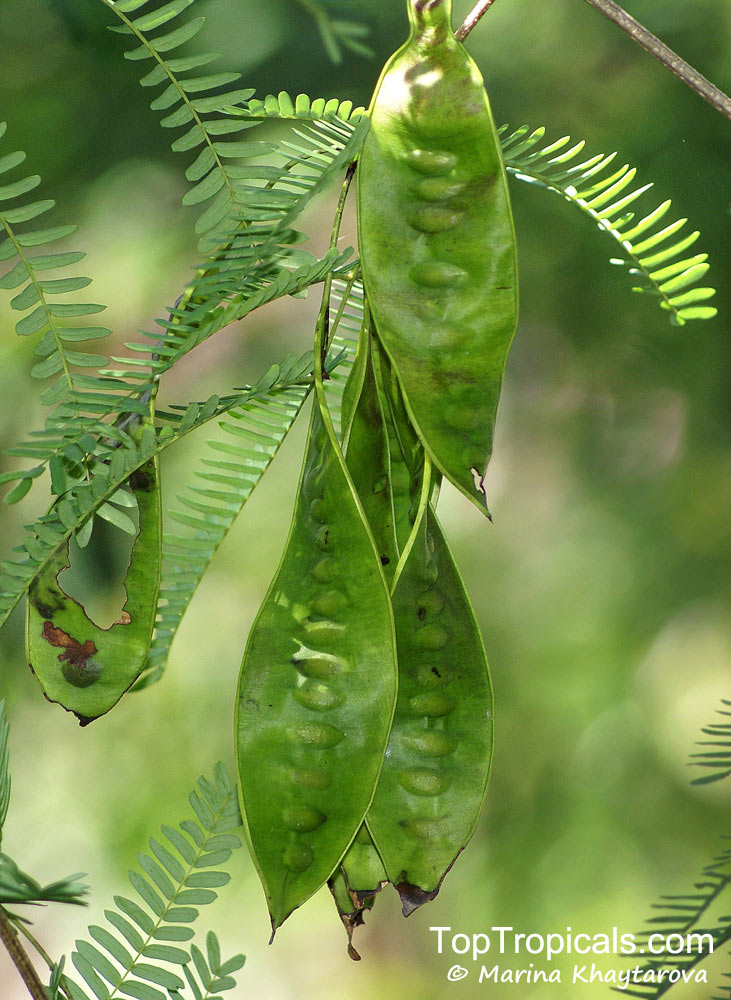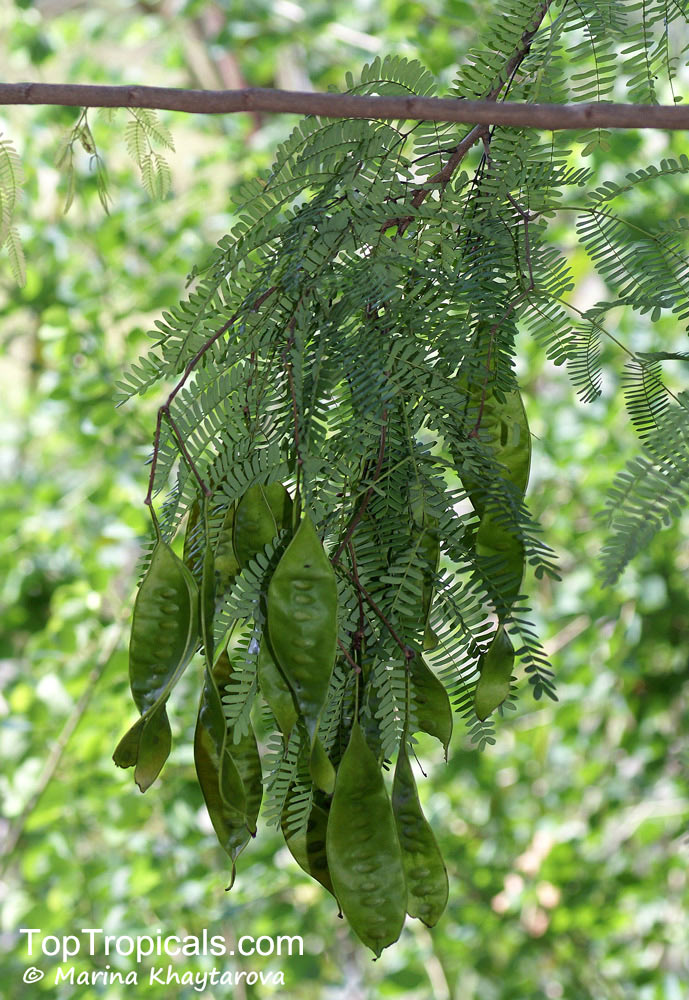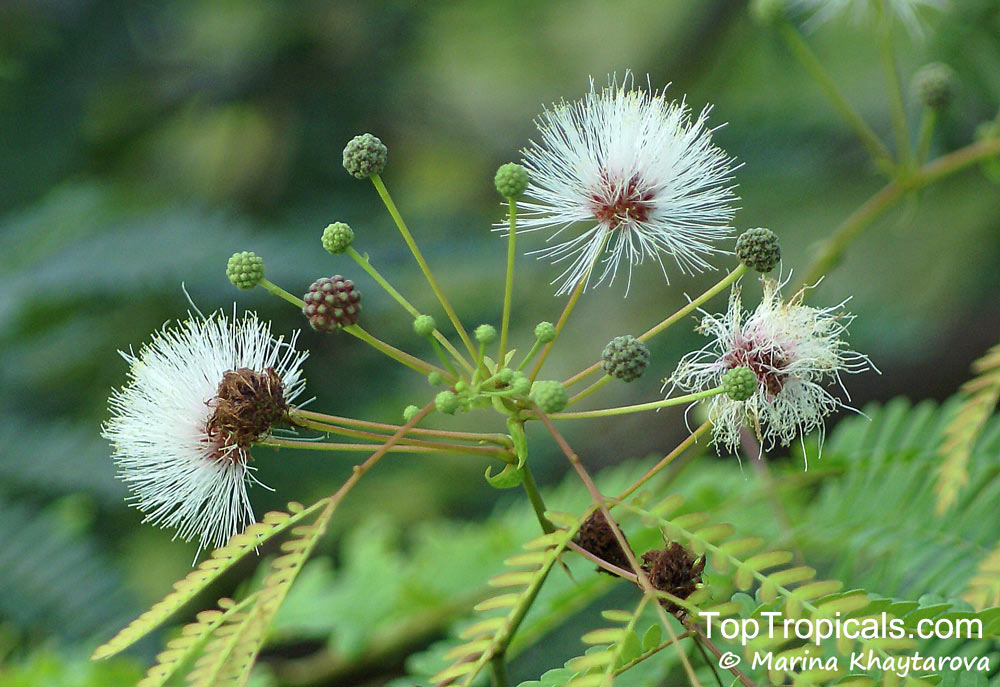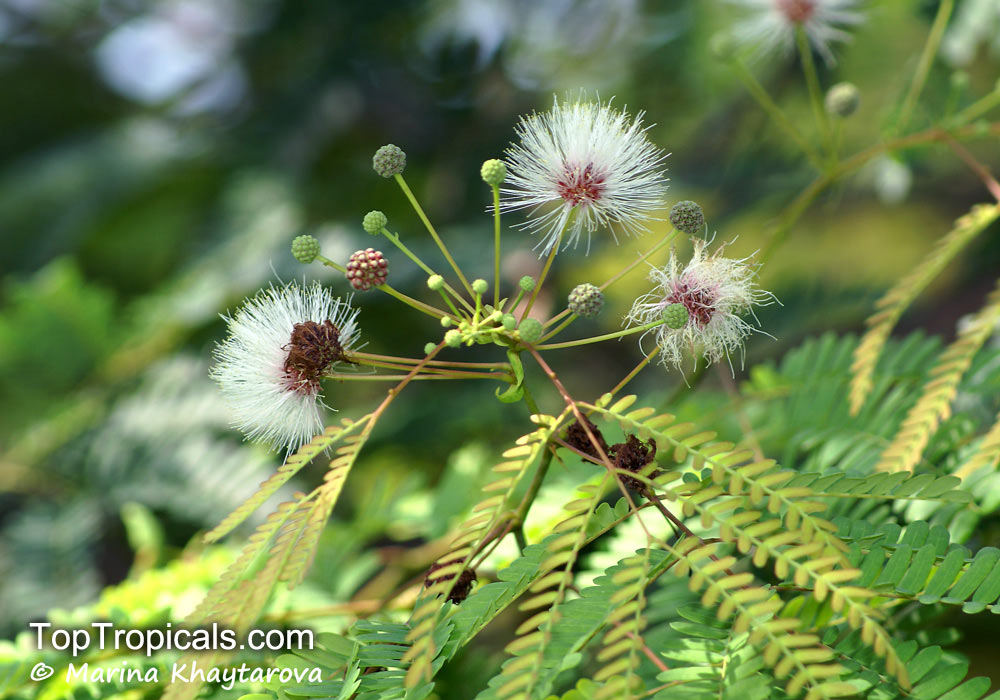Leucaena - Plant Encyclopedia Results
Top Tropicals Plant Encyclopedia
| Number of plants found: 2 |
Botanical names: Leucaena leucocephala, Leucaena glauca, Mimosa leucocephala, Acacia leucocephala
Common names: Wild Tamarind, Lead Tree
Family: Fabaceae
Subfamily: Mimosoideae
Origin: West Indies, Bahamas and Cuba, Trinidad and Tobago, from Southern Mexico to Northern South America








Naturalized northward to southern Texas, California and southern Florida, and southward to Brazil and Chile: also naturalized in Hawaii and the Old World tropics. Leucaena leucocephala is spreading naturally and has been reported as a weed in more then 20 countries across all continents except Europe and Antarctica. It is a weed of open, often coastal or riverine habitats, semi-natural, and other disturbed or ruderal sites and occasionally in agricultural land. Arborescent deciduous small tree or shrub, to 67Ft tall, fast-growing; trunk 4" to 5" in diam. Forming dense stands; where crowded, slender trunks are formed with short bushy tuft at crown, spreading if singly grown; leaves evergreen, alternate, bipinnate with 3-10 pairs of pinnae; flowers numerous, axillary on long stalks, white, in dense global heads 1" across. Fruit pod with raised border, flat, thin, becoming dark brown and hard. It is used as a shade plant in coffee, rubber, cacao and cinchona plantations, for reforestation, windbreaks and firebreaks. Necklaces are made with the seeds. Leadtree is valued as an excellent protein source for cattle fodder, consumed browsed or harvested, mature or immature, green or dry. The nutritive value is equal to or superior to alfalfa. Leadtree has gained a favorable reputation in land reclamation, erosion control, water conservation, reforestation and soil improvement programs, and is a good cover and green manure crop. The leaves, used as a mulch around other crops, are said to significantly increase their yields. Indigenous people in Mexico and Central America, use it as a vegetable. Unripe seeds are consumed with gusto and added to salsa. Green seeds are also consumed raw in Thailand and Indonesia. It tolerates a wide range of rainfall from 500 - 3500 mm and withstands strongly seasonal (6-8 month dry season) climates. However, it is not frost hardy and grows poorly, setting less seed in cooler tropical highland sites. The species also grows poorly on the acid soils with high Aluminium saturation that prevail in many humid tropical areas. In broad terms, it thus adapts well to a wide range of tropical and subtropical environments, especially seasonally dry tropical areas. Trees, propagated by seed or cuttings coppice well. Some seedlings less than one-year old will produce viable seed. Seeds remain viable from several months to several years. The hard waxy seedcoat makes scarification necessary before planting.The easiest and most common method is to scald seed in boiling or near boiling water. Boiling water is poured directly over the seed and allowed to cool to room temperature (preferably overnight), followed by sowing. Alternatively, small numbers of seed may be scarified by nicking which involves the use of a knife or secateur to clip off a small portion of the seed coat at the end opposite the pod attachment scar (hilum). The resultant minor damage to the underlying cotyledons is inconsequential to the germinating seedlings. For forage, seed should be sown 2" to 5" deep, planting at onset of wet season. Leadtree responds favorably to fertilizer and lime. Irrigation and cultivation may be necessary. The crop soon produces a dense stand.
Botanical names: Lysiloma latisiliquum, Acacia bahamensis, Acacia formosa, Acacia latisiliqua, Leucaena latisiliqua, Lysiloma bahamensis, Lysiloma latisiliqua, Mimosa latisiliqua
Common names: Bahamas Lysiloma, Candelon, False Tamarind, Wild Tamarind
Family: Fabaceae
Subfamily: Mimosoideae
Origin: Central America








This tree is a popular nesting site for several native songbirds. Lysiloma latisiliquum, also known as Bahamas Lysiloma, is a native of Central America. It is a fast-growing, deciduous tree or shrub species which typically varies in size from a small tree, growing 10-20 ft tall, to a larger one of 20 ft or more. It is also salt tolerant and can be grown at seaside locations.
The tree develops off-white or white flowers in spring and summer. It has an open crown with drooping branches. Lysiloma latisiliquum prefers full sun to partial shade and requires moderate water, though it is fairly drought tolerant when established.
In order to enjoy the best results, it is important to grow Lysiloma latisiliquum in well-drained soils in USDA Zone 9-11. Plant maintenance includes removing competing vegetation and providing water during the dry season. Proper mulching also helps to keep the soil moist and provides nutrients. In colder climates, this plant should be grown in deep pots, repotted annually and moved indoors during winter.
This is a very attractive and popular species that will add a special flair to any landscape. In addition to providing extraordinary beauty, Lysiloma latisiliquum is also a great choice for attracting birds to your garden.
Use link to repeat this search:
https://toptropicals.com/cgi-bin/garden_catalog/cat.cgi?find=Leucaena&search_op=and&keyword_op=and&language=e&number=10
&no_change_lang=1&user=tt&sale=1&first=0
